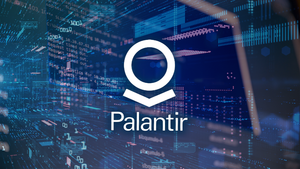Financial News
Altcoin Market Cap Nears 2021 Highs: A Harbinger of a New Altseason?

The cryptocurrency market is abuzz with activity as the total market capitalization of altcoins, excluding Bitcoin, is reportedly approaching its previous all-time highs set in 2021. This significant development signals a potential paradigm shift in investor sentiment and an accelerated rotation of capital, hinting at the dawn of a new "altseason." As this critical threshold is tested, market participants are keenly observing whether a sustained breakout will usher in a broader expansion phase for digital assets beyond the dominant Bitcoin. The implications are profound, suggesting a renewed investor confidence in the broader digital asset ecosystem and a potential re-evaluation of various blockchain technologies and their use cases.
Altcoins at the Precipice: Re-testing the 2021 Peak
The altcoin market, encompassing all cryptocurrencies except Bitcoin, is currently demonstrating remarkable strength, with key metrics indicating a serious re-test of its 2021 peak. Specifically, the TOTAL2 index, which tracks the total market capitalization of all cryptocurrencies excluding Bitcoin, is hovering around the crucial $1.65 trillion resistance level. This level has historically acted as a significant ceiling, capping previous expansion attempts in both 2021 and early 2025. A sustained monthly close above this benchmark would not only confirm a major breakout but could also signal the commencement of a "proper expansion phase" for altcoins.
Adding to this bullish sentiment, the TOTAL3 metric, which further excludes Ethereum (ETH), is also approaching a weekly close above $1.13 trillion. This particular threshold represented a major supply shelf for nearly four years, and overcoming it would carry substantial psychological and technical weight. The collective move of these indices suggests a broad-based rally rather than isolated pumps, indicating a healthier, more mature market structure. This phenomenon is largely attributed to a combination of growing institutional interest, increasing adoption of decentralized finance (DeFi) and other blockchain applications, and a general macroeconomic environment that is becoming more favorable for risk assets, including anticipated Federal Reserve interest rate cuts.
The timeline leading up to this moment has been characterized by a gradual but steady accumulation in the altcoin space following the prolonged bear market. After the initial post-2021 correction, many altcoins saw significant price depreciation. However, the approval of spot Bitcoin Exchange-Traded Funds (ETFs) and, more recently, the anticipation and approval of Ethereum spot ETFs, have injected fresh institutional capital and renewed retail interest into the crypto ecosystem. These approvals have acted as major catalysts, legitimizing the asset class and paving the way for broader investment. Key players in this resurgence include foundational platforms like Ethereum (ETH), Solana (SOL), and various Layer-2 solutions, which have seen increased development activity and user engagement. Initial market reactions have been overwhelmingly positive, with many altcoins registering double-digit percentage gains and a notable decline in Bitcoin dominance, indicating a capital rotation from the leading cryptocurrency into alternative assets.
Potential Winners and Losers in the Altcoin Surge
The surging altcoin market cap creates a clear stratification of potential winners and losers, with established ecosystems and innovative projects poised to benefit most, while less robust or overvalued assets may struggle to maintain momentum. Leading the charge are foundational Layer-1 blockchains and their associated ecosystems.
Ethereum (ETH), as the largest altcoin by market capitalization, stands to be a primary beneficiary. The recent approval of spot Ethereum ETFs by the SEC has significantly bolstered its institutional appeal, positioning it as a major player for sustained capital inflows. The ongoing developments in its scaling solutions, such as sharding and Layer-2 networks, further enhance its utility and potential for widespread adoption. Companies deeply integrated into the Ethereum ecosystem, including those building decentralized applications (DApps), DeFi protocols, and NFT marketplaces, are likely to see increased activity and valuation. For example, major DeFi protocols built on Ethereum, such as Uniswap (UNI) and Aave (AAVE), could see renewed liquidity and user engagement, driving up their respective token values.
Other Layer-1 blockchains with strong developer communities and growing ecosystems, such as Solana (SOL) and Avalanche (AVAX), are also well-positioned to capitalize on the altcoin rally. Solana, known for its high transaction throughput and low fees, has been attracting significant developer and user attention, leading to a vibrant ecosystem of DeFi and gaming projects. Companies developing on Solana, like those contributing to its decentralized exchanges (e.g., Orca) or NFT platforms, could experience substantial growth. Avalanche, with its customizable subnets, continues to attract enterprise solutions and gaming projects, which could see increased investment and adoption during an altseason.
Conversely, "meme coins" or projects with weak fundamentals and speculative valuations could face increased scrutiny. While some may experience fleeting pumps during periods of high market euphoria, their lack of intrinsic value and utility makes them vulnerable to sharp corrections. Projects that fail to innovate, address scalability issues, or attract genuine user adoption may find themselves overshadowed as investors become more discerning, shifting focus towards projects with tangible utility and robust technological roadmaps. Furthermore, highly centralized projects or those facing regulatory uncertainties could also be at a disadvantage, as the market matures and demands greater transparency and compliance. The increasing regulatory focus on digital assets means that projects failing to adapt to evolving legal frameworks could see their growth stifled.
Industry Impact and Broader Implications
The altcoin market's resurgence to near 2021 highs is more than just a price rally; it signifies a maturing industry and has broader implications across the entire digital asset landscape. This event fits into a wider trend of increasing institutional acceptance and mainstream integration of cryptocurrencies. The approval of spot ETFs for both Bitcoin and Ethereum has been a game-changer, drawing in traditional finance players and legitimizing crypto as a viable asset class for diverse portfolios. This influx of institutional capital not only provides liquidity but also instows credibility, pushing the industry towards greater regulatory clarity and professionalization.
The potential for a sustained altseason could trigger significant ripple effects on competitors and partners. For instance, traditional financial institutions (TradFi) that have been hesitant to fully embrace crypto may feel compelled to accelerate their digital asset strategies to avoid being left behind. Companies like BlackRock (NYSE: BLK) and Fidelity (NYSE: FMR LLC), already at the forefront of offering crypto investment products, are likely to see increased asset under management (AUM) in their crypto-related offerings. Furthermore, payment processors and technology companies exploring blockchain solutions could see renewed interest and investment in their initiatives, as the underlying infrastructure gains more adoption. The increased demand for altcoins could also drive innovation in blockchain technology itself, pushing developers to create more scalable, secure, and efficient networks to handle the growing transaction volume.
From a regulatory standpoint, a booming altcoin market will inevitably draw increased scrutiny from global regulators. Policymakers are likely to accelerate efforts to establish clear frameworks for digital assets, particularly for those deemed as securities. This could lead to a more defined regulatory landscape, which, while potentially challenging in the short term for some projects, could foster long-term stability and investor protection. Historical precedents, such as the ICO boom of 2017 and the DeFi summer of 2020, show that periods of rapid growth often precede significant regulatory interventions. However, unlike previous cycles, the current market is supported by more robust infrastructure and a greater understanding of blockchain technology, suggesting that future regulations might be more nuanced and targeted rather than blanket prohibitions. The focus is likely to be on consumer protection, market integrity, and preventing illicit activities, which ultimately benefits the legitimate players in the space.
What Comes Next
The altcoin market's near-recapture of its 2021 highs sets the stage for a compelling future, rife with both opportunities and challenges. In the short term, if the altcoin market cap successfully breaches and sustains above its prior peak, we can anticipate a "price discovery" phase, where many altcoins could experience significant upward momentum, potentially reaching new all-time highs. This period is likely to be characterized by heightened trading volume, increased media attention, and a surge in retail investor participation. Key market opportunities will emerge in established Layer-1 ecosystems, decentralized finance (DeFi) protocols, and promising Web3 projects that demonstrate real-world utility and strong developer activity. Investors should look for projects with solid fundamentals, active communities, and clear roadmaps for innovation.
Looking further ahead, the long-term possibilities suggest a more integrated and mature cryptocurrency market. The sustained growth of altcoins could lead to greater diversification within institutional portfolios, moving beyond just Bitcoin and Ethereum. This could necessitate strategic pivots for traditional financial firms, requiring them to expand their digital asset offerings and expertise. For crypto projects, adaptation will be crucial, with an emphasis on scalability, security, and compliance to meet the demands of a larger, more regulated market. Market challenges may include increased competition, potential regulatory headwinds, and the inherent volatility of the crypto space. However, these challenges are often accompanied by innovation, as projects strive to differentiate themselves and solve critical industry problems.
Potential scenarios and outcomes range from a continued bullish expansion, fueled by sustained institutional interest and widespread adoption, to periods of consolidation or even corrections if macroeconomic conditions shift or regulatory pressures intensify. A "full-blown altseason" (indicated by the Altcoin Season Index crossing 75) could see even smaller, well-vetted altcoins experiencing substantial gains. Conversely, a failure to sustain the breakout above 2021 highs could lead to a period of sideways movement or a minor correction, as market participants reassess their positions. Regardless of the immediate trajectory, the current momentum underscores a significant shift in market dynamics, where altcoins are increasingly recognized for their individual merits and technological advancements rather than merely speculative plays.
Conclusion
The altcoin market's impressive ascent, bringing its total market capitalization to the doorstep of its 2021 all-time highs, represents a pivotal moment for the cryptocurrency industry. This remarkable recovery, driven by a confluence of renewed investor confidence, accelerated capital rotation from Bitcoin, and significant institutional catalysts like spot Ethereum ETF approvals, signals a maturing digital asset landscape. The key takeaway is the burgeoning recognition of altcoins beyond mere speculative assets, with increasing focus on their underlying technologies, use cases, and ecosystem developments.
Moving forward, the market is poised for significant movement. A successful breach and sustained hold above the 2021 peak could usher in a new era of "price discovery" and a broad "altseason," bringing substantial gains across the sector. Conversely, a failure to consolidate above this level might lead to a period of re-evaluation. Regardless, the current momentum highlights a growing sophistication in investor sentiment, with a greater emphasis on projects with strong fundamentals, active development, and clear paths to adoption.
The lasting impact of this event will likely be a more diversified and robust crypto market. It reinforces the notion that the digital asset space is evolving rapidly, with innovation continuously pushing boundaries. Investors should remain vigilant, carefully monitoring key resistance levels, regulatory developments, and the macroeconomic environment. Furthermore, a discerning approach to altcoin selection, prioritizing projects with genuine utility, strong communities, and transparent roadmaps, will be crucial in navigating the opportunities and challenges that lie ahead in the coming months. This current rally is not just about price; it's about the increasing acceptance and integration of decentralized technologies into the global financial fabric.
More News
View More





Quotes delayed at least 20 minutes.
By accessing this page, you agree to the following
Privacy Policy and Terms Of Service.



